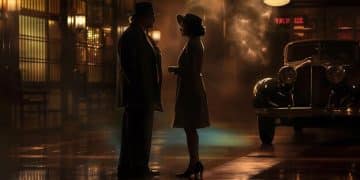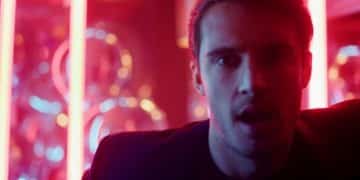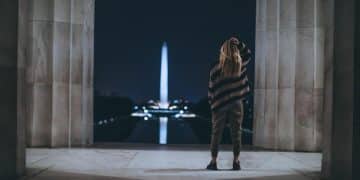The Evolution of the Anti-Hero: Tracing the Journey from Villain to Protagonist
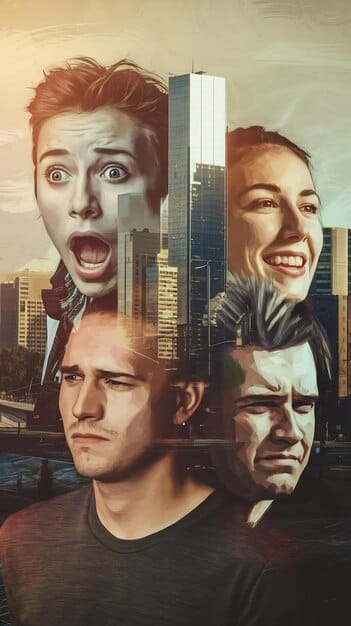
The Evolution of the Anti-Hero: From Villain to Protagonist explores how morally ambiguous characters have transitioned from villains to complex protagonists, reflecting changing societal values and audience preferences in storytelling.
The narrative landscape has undergone a significant shift, particularly concerning characters traditionally seen as villains. The Evolution of the Anti-Hero: From Villain to Protagonist highlights this fascinating change, where individuals with questionable morals become the focal point of our stories.
The Shifting Sands of Morality
Understanding the **evolution of the anti-hero** requires examining how societal norms and moral standards have changed over time. What was once deemed unacceptable might now be seen as a complex character flaw that adds depth to a protagonist.
Classical Roots and Early Depictions
The concept of a flawed hero dates back to classical literature, but the modern anti-hero as we know it began to take shape in the 20th century. Early depictions often served as cautionary tales, showcasing the consequences of straying from societal expectations.
Post-War Cynicism and the Rise of the Outsider
The disillusionment following World War II paved the way for characters who questioned authority and challenged the status quo. This cynicism found its expression in anti-heroes who were often outsiders, rebels, or even criminals.
- Changing Social Norms: Shifts in cultural values have allowed for more nuanced portrayals of “bad” characters.
- Audience Empathy: Viewers and readers began to empathize with characters facing difficult choices, even if those choices were morally ambiguous.
- Challenging the Status Quo: Anti-heroes often reflect a broader questioning of traditional authority and institutions.
The shift from clear-cut morality to complex shades of gray allowed for richer storytelling and deeper audience engagement.
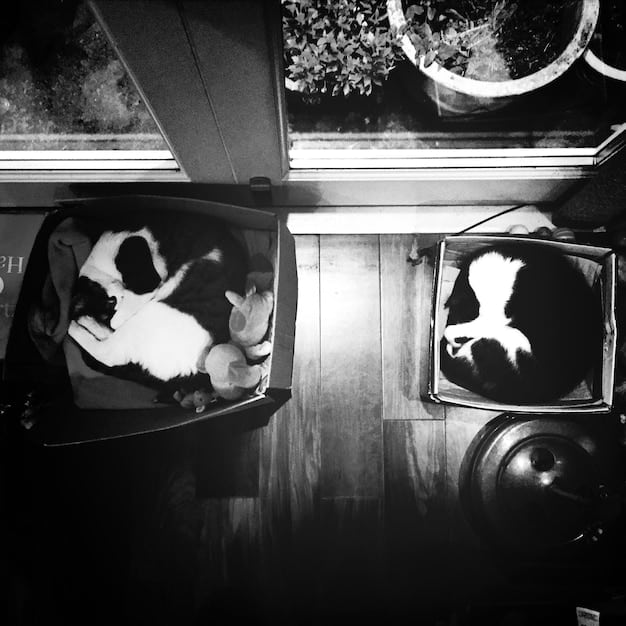
Key Characteristics of the Anti-Hero
Defining the anti-hero goes beyond simply being a “bad guy.” There are specific traits and behaviors that distinguish them from traditional villains and make them compelling protagonists.
Moral Ambiguity and Questionable Motives
Anti-heroes often operate in a gray area, making choices that are not always morally justifiable. Their motives might be selfish, driven by revenge, or born out of desperation.
Relatability and Human Flaws
Despite their flaws, anti-heroes often possess relatable qualities that resonate with audiences. They might struggle with internal conflicts, face difficult circumstances, or display moments of unexpected kindness.
- Internal Conflicts: Anti-heroes often grapple with their own demons and moral dilemmas.
- Unconventional Methods: They are willing to bend or break the rules to achieve their goals.
- Audience Identification: Viewers often see aspects of themselves in the struggles and vulnerabilities of anti-heroes.
Unlike traditional heroes with unwavering ideals, anti-heroes feel more human, making them more engaging and thought-provoking.
The Rise of the Anti-Hero in Film and Television
The entertainment industry has played a crucial role in popularizing the anti-hero archetype. Film and television have provided fertile ground for exploring complex characters who defy traditional heroic conventions.
Breaking Bad and the Transformation of Walter White
Walter White, the protagonist of Breaking Bad, is a prime example of an anti-hero’s transformation. He starts as a mild-mannered chemistry teacher and gradually evolves into a ruthless drug lord, blurring the lines between right and wrong.
Dexter and the Appeal of the Serial Killer
Dexter Morgan, a serial killer with a moral code, captivated audiences with his internal struggle and the justification he used for his actions. The show explored the idea of justice and morality through the lens of a deeply flawed character.
The Sopranos and the Mob Boss with a Heart
Tony Soprano, the complex protagonist of The Sopranos, presents a mob boss who juggles family life with criminal activities. His therapy sessions reveal his vulnerabilities and internal conflicts, making him a multifaceted anti-hero.
The rise of streaming services and premium cable channels has allowed for more daring and nuanced portrayals of anti-heroes, contributing significantly to their growing popularity.
Why We Root for the “Bad Guy”
The appeal of the anti-hero lies in their ability to challenge our perceptions of right and wrong. There are several reasons why audiences find themselves rooting for characters who are fundamentally flawed.
Challenging Conventional Morality
Anti-heroes force us to question our preconceived notions of good and evil. They demonstrate that morality is not always black and white, and that even “bad” people can have redeeming qualities.
Relatability to Human Imperfection
Everyone makes mistakes, and anti-heroes embody this imperfection. Their struggles and flaws make them relatable, allowing audiences to connect with them on a deeper level.
Vicarious Rebellion
Anti-heroes often defy authority and break the rules, which can be appealing to audiences who feel constrained by societal expectations. Rooting for them becomes a form of vicarious rebellion.
- Complexity: Anti-heroes are often more complex and psychologically interesting than traditional heroes.
- Escapism: Watching anti-heroes allows us to explore darker aspects of the human experience in a safe and controlled environment.
- Moral Exploration: Their actions prompt us to consider our own moral compasses and ethical boundaries.
The popularity of anti-heroes reflects a desire for more realistic and nuanced characters who mirror the complexities of life.
The Moral Implications of Anti-Hero Narratives
While the rise of the anti-hero has enriched storytelling, it also raises important moral questions. How do these narratives influence our perceptions of right and wrong, and what are the potential consequences of glorifying morally ambiguous characters?
Blurring Lines Between Good and Evil
Stories centered around anti-heroes can blur the lines between good and evil, potentially leading to a more relativistic view of morality. It’s important to critically analyze the messages conveyed by these narratives.
Responsibility in Storytelling
Filmmakers and writers have a responsibility to present anti-heroes in a way that acknowledges the consequences of their actions. Glorifying harmful behavior without context can be problematic.
- Ethical Considerations: Creators should be mindful of the potential impact their stories have on viewers’ moral development.
- Context and Nuance: Anti-hero narratives should offer context and nuance, exploring the motivations and consequences of the characters’ choices.
- Critical Analysis: Audiences should engage with these stories critically, considering the ethical implications and the messages they convey.
Thoughtful storytelling can use anti-heroes to explore complex moral issues, promoting empathy and understanding without condoning harmful behavior.
The Future of the Anti-Hero
As storytelling continues to evolve, the anti-hero is likely to remain a prominent figure in film, television, and literature. But what does the future hold for these complex characters?
Exploring New Shades of Gray
Future anti-hero narratives may delve even deeper into the complexities of human morality, exploring new shades of gray and challenging conventional notions of heroism.
The Impact of Social and Political Context
Social and political climates will continue to shape the portrayal of anti-heroes. Stories may reflect contemporary issues and anxieties, using flawed protagonists to explore relevant themes.
- Greater Diversity: We may see more diverse representations of anti-heroes, reflecting a broader range of experiences and perspectives.
- Moral Ambiguity: Expect even more morally ambiguous characters who force us to confront uncomfortable truths about ourselves and society.
- Audience Engagement: The success of anti-hero narratives will depend on their ability to engage audiences in meaningful conversations about morality, ethics, and the human condition.
The **evolution of the anti-hero** suggests a continuing exploration of the nuances of human nature and the ever-changing landscape of morality.
| Key Point | Brief Description |
|---|---|
| 🎭 Moral Ambiguity | Anti-heroes operate in gray areas, challenging traditional morality. |
| 💔 Relatability | They possess human flaws, making them relatable despite questionable actions. |
| 🎬 Popular in Media | Film and TV have popularized anti-heroes in shows like “Breaking Bad” and “Dexter”. |
| 🤔 Moral Implications | Their narratives raise questions about the impact of glorifying morally ambiguous characters. |
Frequently Asked Questions
▼
An anti-hero lacks traditional heroic qualities, often displaying flaws, questionable morals, and operating outside societal norms. They are complex and relatable despite their imperfections.
▼
Anti-heroes resonate with audiences because of their relatability, complex characters, and ability to challenge conventional notions of morality. They reflect real-world complexities, rather than idealistic views.
▼
Prominent anti-heroes include Walter White from “Breaking Bad,” Dexter Morgan from “Dexter,” and Tony Soprano from “The Sopranos.” They all navigate moral complexities and engage in questionable behaviors.
▼
Not always. Some anti-heroes may experience redemption, while others remain morally ambiguous or even descend further into darkness. The narrative arc varies depending on the story’s themes.
▼
Anti-heroes prompt questions about the nature of good and evil, the justification of immoral acts, and the consequences of blurring ethical lines. They challenge viewers to confront their own moral compasses.
Conclusion
The **evolution of the anti-hero** in storytelling reflects a profound shift in how we view heroism and morality. From flawed individuals making difficult choices to complex characters challenging conventional norms, the anti-hero’s journey captivates audiences by exploring the gray areas of human nature and prompting us to question our own ethical boundaries.


